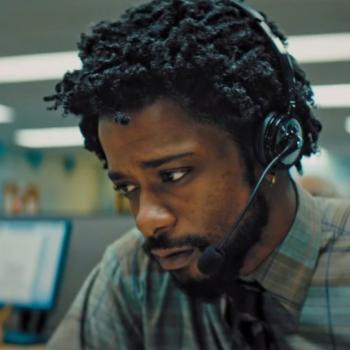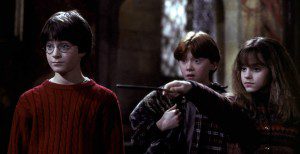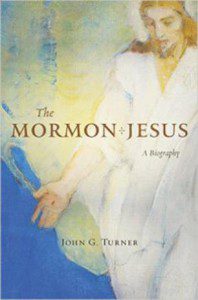Why an 80-year-old children’s book feels newer and more grown-up than the high-tech PG-13 epics recently based on it.
Reviewing the Hobbit movies at this point would be, well, pointless. If you care about these things (and I do), then you already know that the Hobbit movies are bad Tolkien fan-fiction1 or even a parody—The Battle of the Five Armies reuses material from the Lord of the Rings movies in such silly ways that I’m half convinced it’s making fun of them. On the other hand, if you don’t care about these things, then you either like the Hobbit movies because they’re generic Hollywood blockbusters or you dislike them for the same reason.
So I won’t review the Hobbit movies.2 Instead, I’ll review the book they’re (sort of) based on. My hope is that, whether you liked the movies or not, you’ll give the book a(nother) try.
The Hobbit, by J.R.R. Tolkien, is a children’s book. It’s a reverse coming-of-age story, in which a boring grown-up is talked out of his boring comforts and into the world that children inhabit: a wild, exciting, fantastic place where everything is surprising and everyone is bigger than you are.
Through his adventures, this boring grown-up—Bilbo—learns some unexpected things. First among these is that the dangerous, fantastic world is real, and that his boring grown-up life in the Shire is, if not quite an illusion, certainly quite artificial. Second, and much more surprising, is that Bilbo is cut out for this wild new world. He’s small, but he’s quiet and quick, and he possesses a courage and a resourcefulness that save the day when larger and prouder people fall short. Bilbo will go home in the end, of course—the book is subtitled “There and Back Again”—but the hobbit who returns to Bag End will never be the same as the one who left it.
As pleasant as all that is, though, it’s well-worn children’s-book material, and not particularly interesting to grown-ups who’ve learned the harder truths that children’s books usually leave out: that there are far fewer grand treasures in the world than ambitious treasure-seekers; that big, scary dragons aren’t often shot down by nobodies; and that even in the most exciting places, most people’s time is spent doing mostly boring work.
What should make The Hobbit interesting to grown-ups is not that it’s a children’s story, but that it subverts your expectations of a normal children’s story. You’ll see what I mean if you imagine how the book might have been different in the hands of a less imaginative author.3
For starters, if The Hobbit were a normal children’s story, Bilbo would not have been brought into the company as a burglar, and Thorin’s quest would have had grander goals than burglary.4 The journey to the mountain would be similar to the book—the company overcoming dangers and detours through the unexpected usefulness of its smallest member—but once the company reached the mountain, things would be quite different. The dragon would be slain by the heroes, not by some grouchy minor character whose name we learn only a page before the dragon dies.5 And after the dragon’s death, there would be peace and harmony in the land and everyone would live happily ever after, rich beyond their wildest dreams.
In the book Tolkien actually wrote, reaching the mountain is the moment when everyone’s expectations fall apart. Bilbo finally gets a look at the dragon and the treasure and realizes he’s gotten in way, way over his head—that no amount of hobbit-courage or hobbit-resourcefulness will save him here. He also finally sees his dwarf companions for what they really are: generally decent people, but no more able to fight Smaug than Bilbo is, and rather less brave about it. So instead of confronting the dragon, they hide, powerless, while Smaug destroys their supplies, traps them in his lair, and flies off to annihilate Lake-Town.
When the dragon is miraculously killed, no “happily ever after” ensues, and the moral message of the book starts to become clear. Thorin has everything he’s dreamed of: his grandfather’s throne, his childhood home, and the ancient treasures of his people. Yet his situation is a mess. He’s sitting on a pile of treasure that everyone within a thousand miles will want a piece of, in a fortress that the goblins will want to claim for themselves, and he has only thirteen dwarves and a hobbit to defend it. He needs food, but with Lake-Town destroyed and winter setting in, there’s little to be had for any price. And the nearest possible sources of aid, his neighbors, all hate him—the wood-elves because he trespassed on their lands and escaped their dungeons; the Lake-Men because he awoke the dragon that destroyed their town and because he refuses to share the dragon’s treasure.
People sometimes dismiss Tolkien for seeing the world in black and white, and I suppose in one sense he did: he thought there was one obvious, morally correct answer to the predicament Thorin and his neighbors found themselves in. Thorin should share and apologize, the elves should apologize and forgive, and everyone should get down to the tricky business of surviving, together, in a hostile part of the world.
But when it comes to the reasons for Thorin’s predicament, Tolkien didn’t see the world in black and white at all. If he had, he would have written a book in which the desire for treasure is simply evil, one in which the only reasons for conflict are prejudice and “dragon sickness.”6 The moral of the story would have been “Gold makes you crazy,” and the solution would have been “Just give it up.”
But Tolkien is much more ambivalent about treasure than that. True, “dragon sickness” is a phrase from the book, but in the book it refers to a love of treasure like the dragon’s: sheer love of possession, of having what others do not, and of taking it from them by deceit or violence. The orcs’ love of treasure was if possible even worse: a love of the power that riches bring, and of the ability to conquer, oppress, and torture others.
Yet on the other hand, the free peoples’ love of treasure was not simply dragon sickness. The Lake-Men, of course, wanted the treasure because they needed it,7 but also because some of it was theirs by right: some of the dragon’s hoard had been stolen from their ancestors in Dale, and some they’d earned by killing the dragon. The elven-king loved treasure, too, but not only for possession—elves love beauty and light, and the dragon’s treasure was bright and beautiful.8
The dwarves’ motives were most complicated of all. Like the Lake-Men, they wanted to reclaim their heritage, and like the elves, they loved beauty. But their love of treasure was much more intimate than either the Lake-Men’s or the elves’ because they had made this treasure. They had mined the ore, refined the precious metals, and painstakingly worked them into intricate, beautiful things. Since being driven from the mountain, they had been forced to mine coal or work iron into simple tools—a shameful, demeaning waste of their ability, like Shakespeare writing ad copy.9 Their love of treasure, at its heart, was a love of their craft.
So Tolkien didn’t write a simple “greed is bad” fable, but rather a whole encyclopedia of reasons for wanting treasure—some better, some worse, all dangerous, and none likely to just go away. Neither did he write a story in which everyone can blame all their problems on some monster or evil overlord; rather, he wrote a story in which people’s natural desires—even the good ones—lead quite naturally to conflict.
And how is the conflict ultimately resolved? Here Tolkien’s moral message is, as usual, quite pessimistic. Thorin, Bard, and the elves are entirely unable to escape their predicament on their own. Even Bilbo’s theft of the Arkenstone—an act both of betrayal and of shocking grace—is insufficient to solve the problem. It takes monsters. Fighting between elf and dwarf is averted only because the goblins attack. Friendship between elf and dwarf can’t come about through people’s basic decency, through the gradual overcoming of stereotypes or pleas of “Can’t we all just get along?”. Elves’ and dwarves’ blood has to mix on the mountain. Thorin has to die.
Such is the beauty of The Hobbit. Its tone is diverting, silly, and optimistic. It introduces readers to a world of wonder, thereby reintroducing them to the real world’s wonders. And it teaches that timeless message of children’s books: that being small doesn’t mean you’re unimportant.
But it does all this without whitewashing the world it celebrates. Danger is as real as wonder. Small people can make big differences, but they’re still small, and the world is too big even for the biggest of us. And, as Catholics like Tolkien have known for ages, evil isn’t a temptation that imposes itself on our basically good souls and can be overcome by an act of will. Rather, it is a consequence of the corruption (through Adam’s fall) of all human desires and faculties, such that even our best intentions and most natural passions can easily lead to sin and death.10
The Hobbit is a children’s book that doesn’t leave out the harder truths. And that is a rare and precious thing.
1. The idea that the Hobbit movies are bad fanfiction comes from The Atlantic’s Christopher Orr.↩
2. That doesn’t mean I won’t take potshots in the footnotes.↩
3. Or less imaginative screenwriters.↩
4. The movies’ screenwriters noticed this disconnect between the actual motive of Thorin’s quest and audiences’ expectations of the genre, so they invented some nonsense about Thorin needing the Arkenstone to become king of the dwarves.↩
5. Here, too, the book didn’t live up to the screenwriters’ expectations: they turned Bard into a central character complete with a family, a feud with the Master of Lake-Town, godlike fighting prowess, and more screen time than the hobbit the movies were actually named after.↩
6. In other words, he would have written a book like the Hobbit movies, whose entire moral content can be summarized as follows: “Dragon sickness and goblins: bad. Sharing treasure and killing goblins: good. Can we get back to killing goblins yet?”↩
7. This seems to be the one acceptable reason for wanting treasure that the movies will admit. They show Bard wanting his share, just like the dwarves and elves, but he alone doesn’t go crazy over it.↩
8. For more on Thranduil’s character and motives, which the movies portrayed as senselessly proud and greedy (but his wife was killed by orcs, so it’s okay!), click here. In particular, contrast his message to Thorin in the movies—give us treasure or we attack at dawn—with his response in the book when Bard (Bard!) suggested an immediate attack: “Long will I tarry, ere I begin this war for gold.”↩
9. Or like Cate Blanchett and Ian McKellan appearing in the Hobbit movies.↩
10. Thus, the intervention of the eagles, Gollum falling into the fire, and so forth aren’t dei ex machina getting Tolkien out of plot jams. They’re a reflection of his theology—of the necessity of grace.↩











